Love it or hate it, the Barbie movie shows how impactful branded content can be as a form of advertising.
Mattel estimates a $125 million revenue boost from the movie that revived the 84 year old legendary doll. The blockbuster hit seeped into popular culture, inspiring everything from retro bodysuits, a throwback to the original iconic Barbie doll, to Barbie-themed Airbnb mansions in which fans could immerse themselves.

Image credit: Hogwash Studios
Mattel isn’t the only juggernaut taking advantage of branded content. Publishers are using this form of advertising on a more subtle scale, too, by integrating branded content alongside their editorial content.
As display ad performance wanes, you can open a new revenue stream that:
- Performs better than display ads
- Attracts desirable advertising partners
- Keeps readers engaged
Learn the basics of starting with branded content and how it can transform your publication’s monetization strategy.
Branded content provides a more engaging alternative to traditional ads
Branded or sponsored content is a type of editorial content paid for by a brand on a publisher’s website. It looks and reads like the publication’s standard articles but subtly highlights the brand’s products, services, or messaging.
For example, a food publication partners with a cookware brand to craft an article about easy Thanksgiving recipes. The publication naturally weaves in the advertiser’s products by suggesting the best pots and pans for each dish.
The key to successful branded content is to prioritize the reader experience. Even if the reader doesn’t make a purchase, the content should still be interesting, entertaining, or helpful.
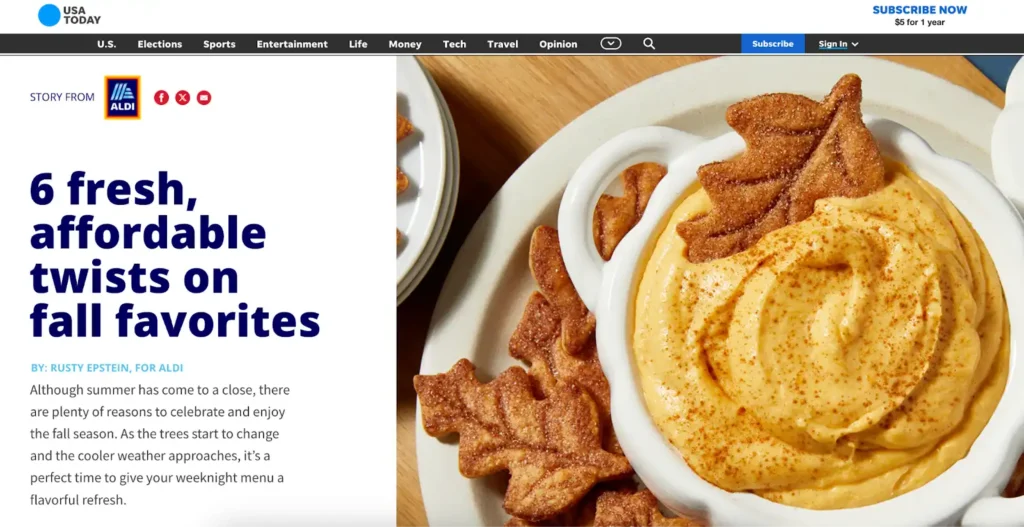
USA Today created a fun collection of fall recipes to showcase what readers could achieve with Aldi’s mouthwatering grocery offerings.
Branded content vs. display ads
Traditional advertising usually relies on display ads on publications’ websites. These ads are placed in or around articles to get readers to click through to the advertiser’s website and make a purchase.
Historically, publications have received most of their revenue from display ads. But their impact—and demand from brands to buy them—has declined. These ads often disrupt the reader experience and don’t relate to the surrounding article. So, readers have learned to tune them out.
In contrast, branded content aims to provide the reader value by weaving the advertiser’s message into an article the audience wants to read. The result is more engagement and a stronger brand impression.
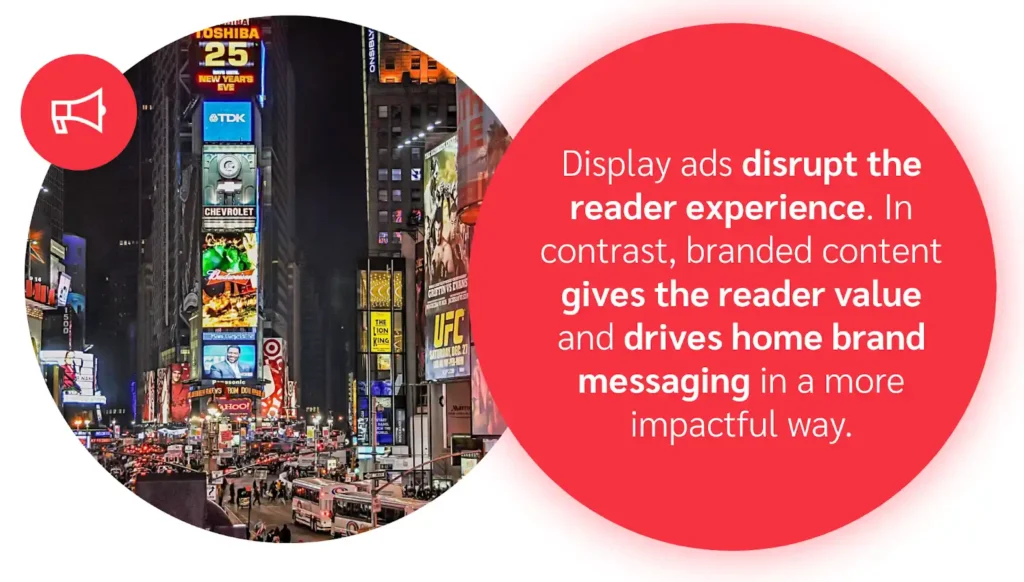
Branded content vs. commerce content
Commerce content is another effective monetization strategy publishers use to diversify from display ads.
Unlike branded content, which focuses on a single advertiser, commerce content usually includes several brands in the same piece—for example, in a Mother’s Day gift guide or listicle of the best at-home workout gear. To monetize, you add affiliate links and earn a commission when a reader buys from that link.
Publishers create branded content in close collaboration with the advertiser. Meanwhile, commerce content is made independently by the publisher. That way, it’s lower lift because you have full control over direction.
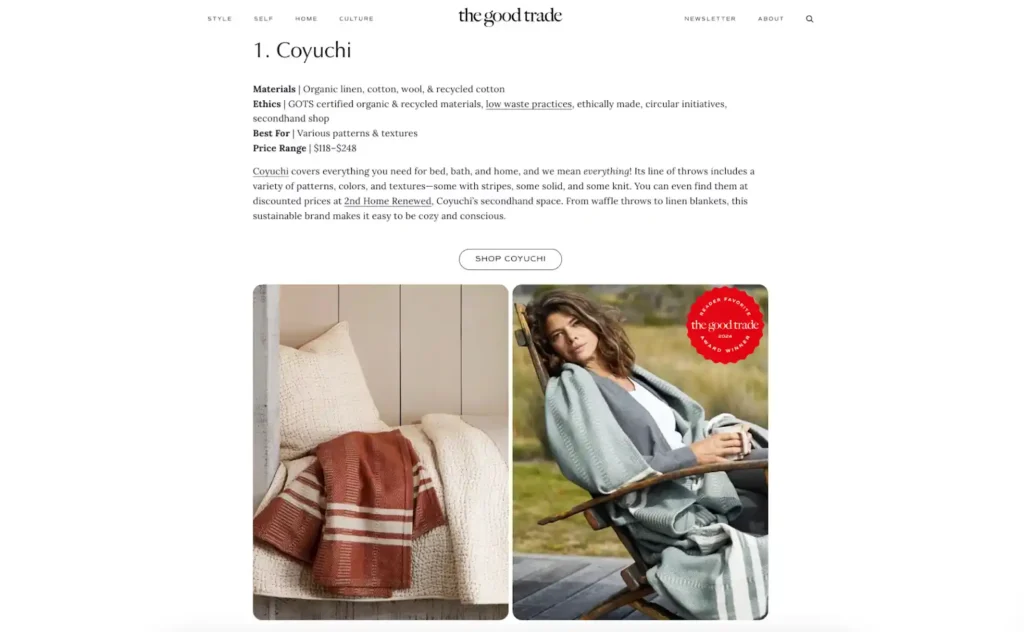
This is a prime example of commerce content from The Good Trade. The team curated a list of organic, sustainable throws that appeal to their eco-conscious audience and each item includes an affiliate link.
These two content types are valuable to brands for different reasons. Branded content typically helps achieve upper-funnel marketing goals, such as increasing brand awareness and building affinity with a target audience.
Commerce content captures readers lower in the purchase funnel who are actively researching and evaluating products to buy. So, the two work well as part of a comprehensive revenue-generating strategy for publishers.
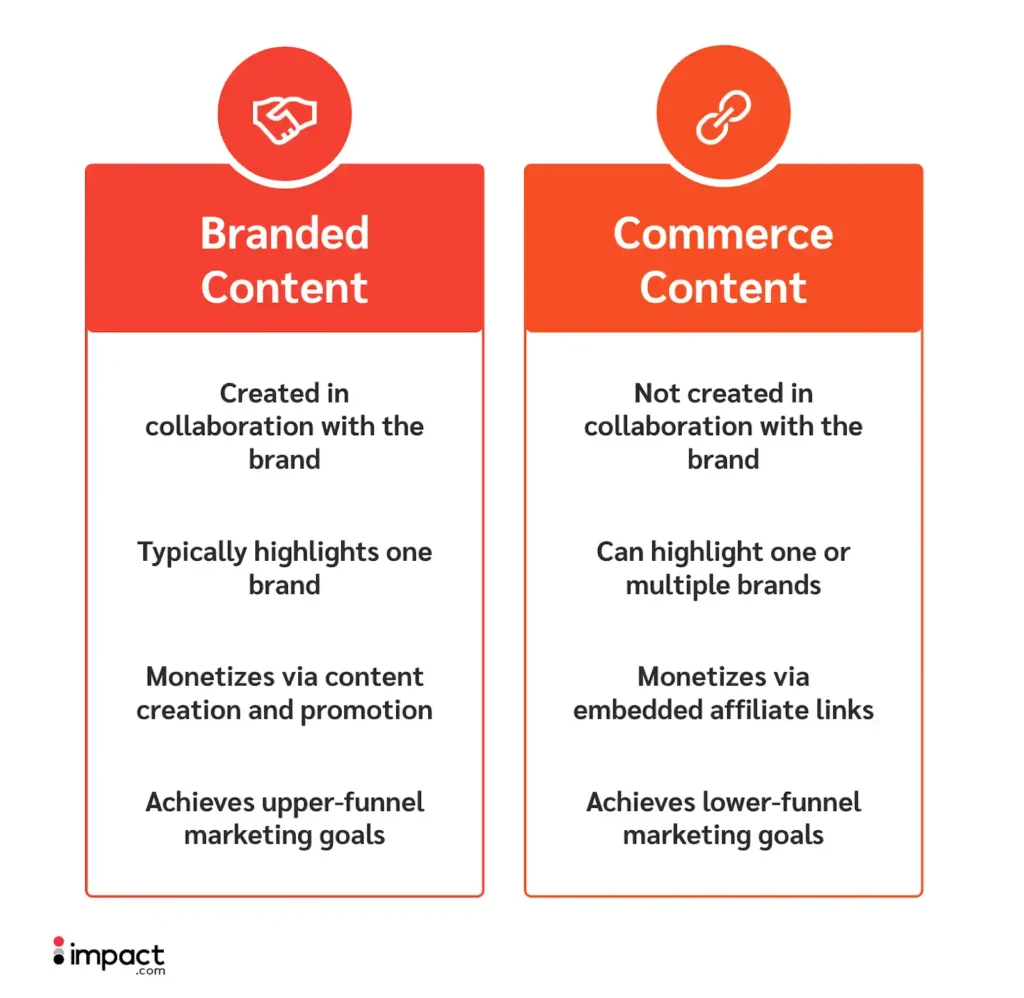
Why publishers lean into branded content to diversify revenue
As publishers seek alternatives to banner ads, branded content emerges as a compelling revenue stream that’s redefining how publications approach advertising.
Outperforms display ads
Branded content that comes through Pressboard by impact.com has a click-through rate (CTR) of 2.3%. That’s a staggering 657 percent higher than the average CTR for display ads—and underscores how effectively branded content resonates with readers.
Branded content also overcomes “ad blindness.” User experience studies consistently show that consumers ignore display ads. They’ve even begun disregarding content that resembles an ad or appears in places traditionally dedicated to ads.
By seamlessly integrating brand messaging into engaging editorial content, branded content captures readers’ attention in a way that ads can’t.
Instead of hard-selling a product with little other context, branded content immerses the audience in interesting stories and naturally piques their interest in the advertiser. Ultimately, readers develop stronger brand affinity, which leads to loyalty and conversions.
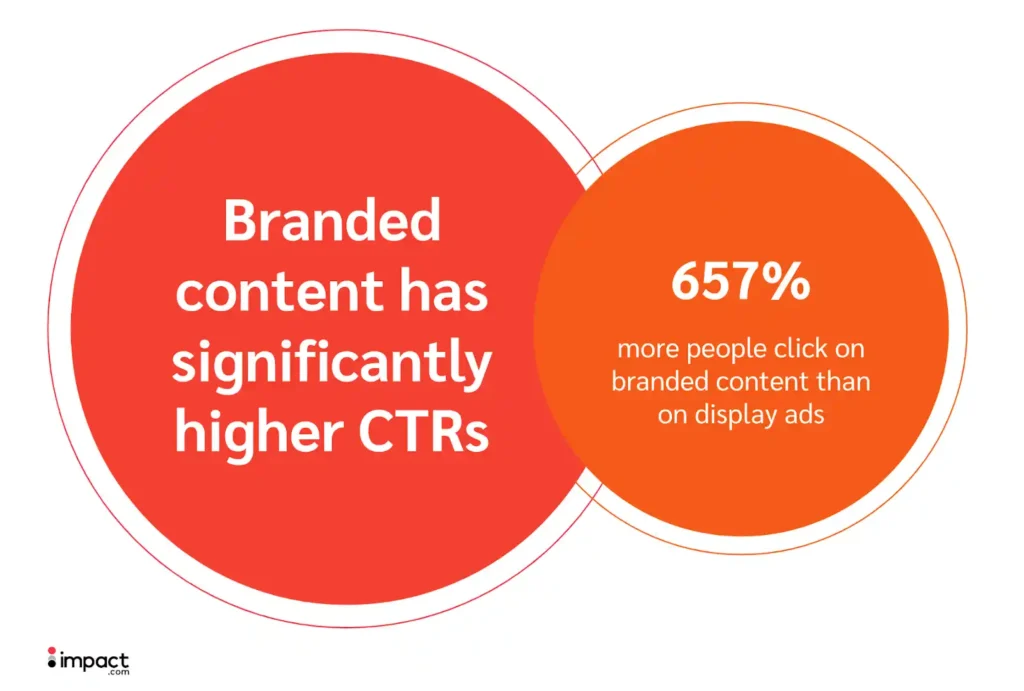
Sources: Pressboard 2023 Benchmark Report, Adroll
Better income source to support your publication
Poor ad performance means demand is down, so brands aren’t willing to pay as much for ad space. If that wasn’t enough, ad blockers are expected to cost publishers $54 billion in lost ad revenue worldwide this year—making it all the more essential to find new income sources.
Because branded content is 7.6x more effective at engaging audiences, you can attract more high-value brand partners. And you can charge a lot more for it.
You’re also paid for production upfront. So you don’t have to hope for a kickback in ad revenue after publishing.
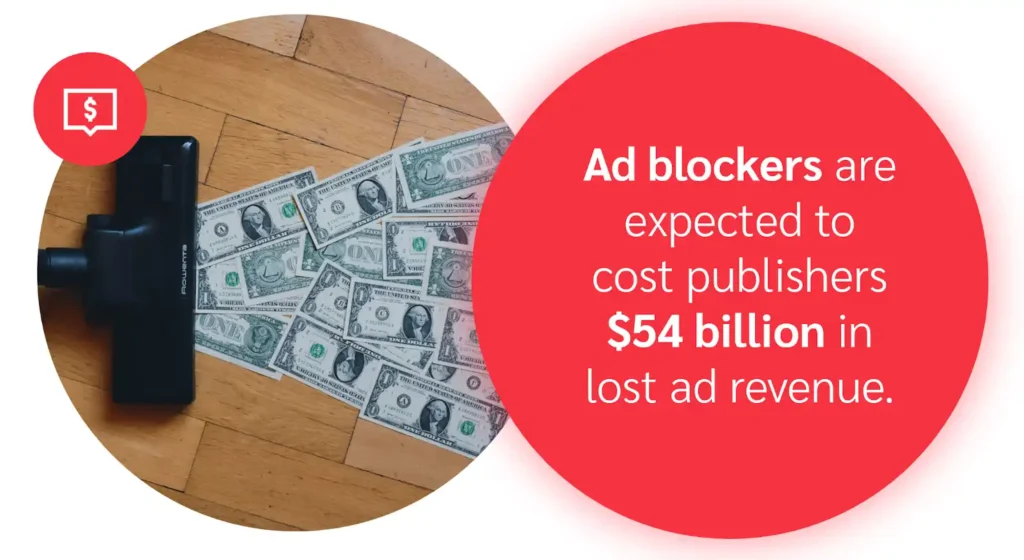
Source: 2023 eyeo ad-filtering report
Improves reader experience
Display ads’ intrusiveness frustrates readers. And as ad performance declines, publishers are cramming more of them onto pages to make up for the lost revenue. So, readers are left dodging numerous ads to read narrow text windows.
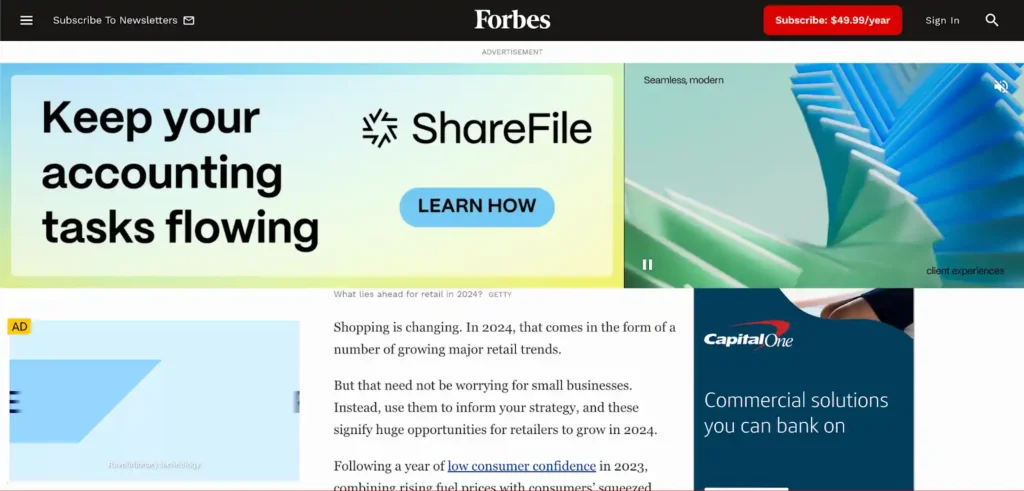
This ad-saturated experience harms the publication’s reputation and discourages audiences from continuing to read.
Consumers dislike display ads so much that 50 percent of US adults use ad blockers to avoid them.
In branded content, the ad and the content are the same thing. Instead of feeling interrupted by imposing ads, readers benefit from relevant and valuable content. This integration keeps readers immersed in the experience.
Consequently, the content appears more authentic and trustworthy, enhancing reader satisfaction and fostering a deeper connection with the brand.
3 examples of branded content in action
Branded content can take many forms and be adapted to suit different industries, audiences, and marketing objectives. See how publishers and brands can create sponsored content together while maintaining editorial integrity and providing value.
Atlas Obscura encourages tourism with Let’s Texas
Atlas Obscura partnered with Let’s Texas, the state’s tourism office, on the article “7 Places to Experience Big Wonder in Texas.”
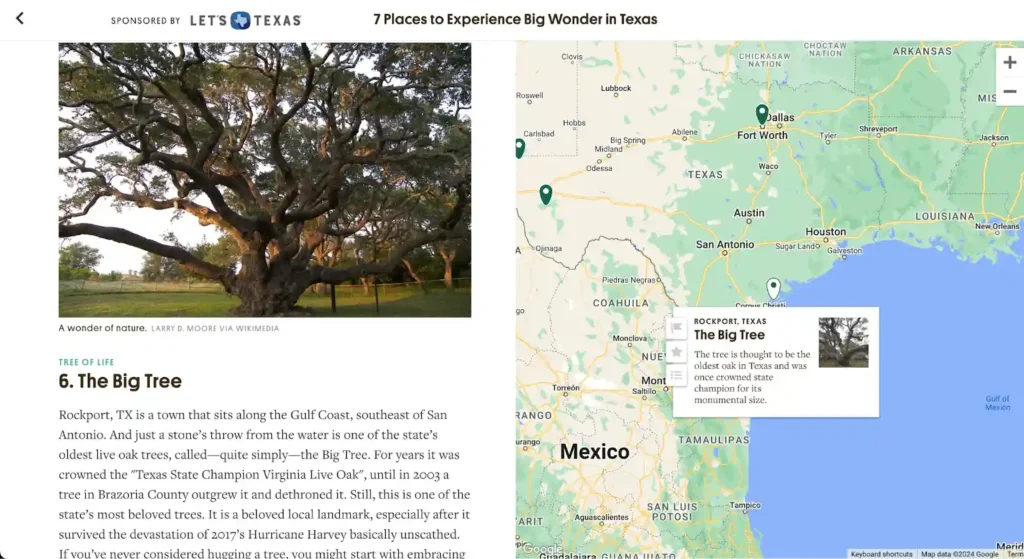
The piece introduces readers to some of the state’s most awe-inspiring and off-the-beaten-path destinations. The interactive map format and informative text about each location provide value and keep the reader locked in.
Atlas Obscura has created engaging sponsored content that readers love by finding that sweet spot where reader and advertiser interests intersect.
Insider shares inspirational stories with Ford
In this video, Insider partners with Ford to share a day-in-the-life story of influencer Dayna Bolden.

Though the piece spotlights Bolden, it also shows how Ford complements her busy life and positions the brand as relatable and environmentally friendly. It works because the story is inspiring, even without focusing on the brand.
Bustle helps shoppers check off their gift list with Walmart
In this holiday gift guide, women’s lifestyle magazine Bustle partners with Walmart to curate a list of the hottest toys for kids.
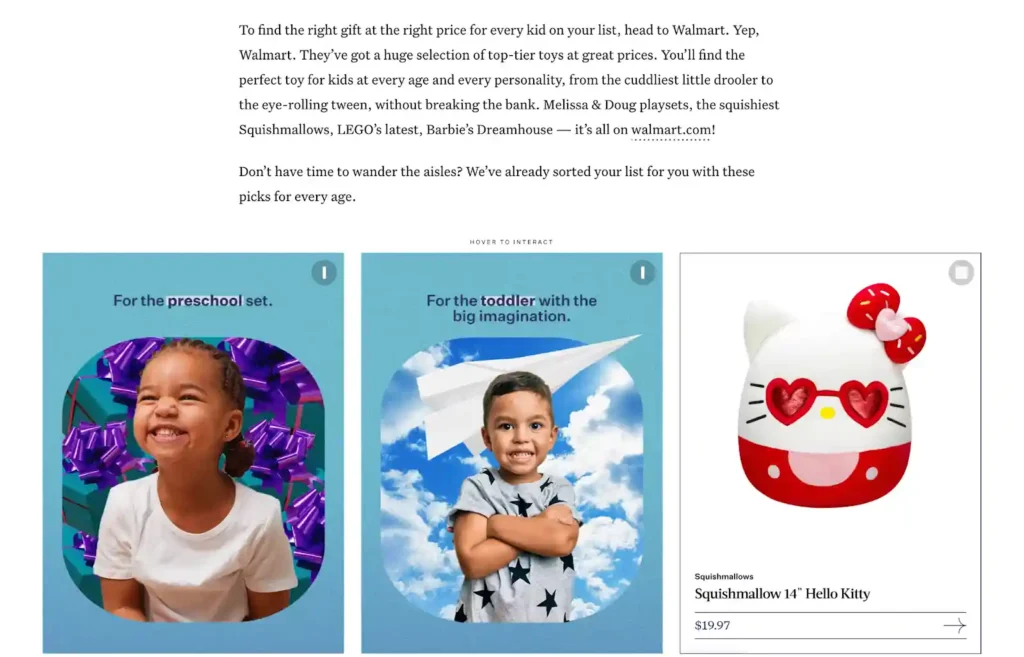
It showcases a variety of toys for different age ranges and interests, making it easy for readers to find the perfect gift. Interactive elements and playful graphics make the piece more eye-catching than similar guides.
Each featured toy also offers affiliate links to Walmart’s website, where readers can buy the product. A hybrid strategy to monetize lower-funnel sponsored content, such as gift guides, can effectively provide value to readers while generating extra revenue.
How to charge advertisers for branded content
When it comes to pricing branded content, there are three common models you can use:
- Package rate: A fixed rate that includes production, publication, and promotion.
- Cost per mille (CPM): Charges advertisers per thousand impressions on ads that promote sponsored content. In some cases, publishers add a charge for production.
- Cost per read (CPR) or cost per view (CPV): Charges advertisers based on the number of people who read or watch the content. Typically includes promotion at no additional charge. Production may or may not be included in the cost.
At impact.com, we typically recommend the CPR/CPV model because it aligns with advertisers’ goals of getting eyes on their content.
You and the brand agree to a minimum number of reads. Then, as the publisher, you are responsible for promoting the piece through your various organic and paid channels until you hit that minimum guarantee. Any consumption beyond that is considered a bonus for the brand.
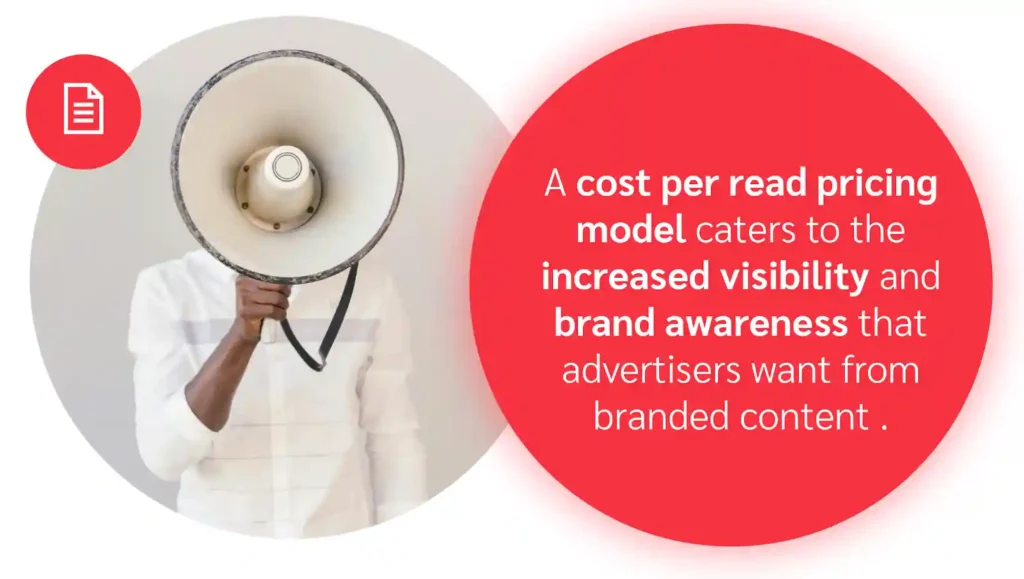
Measuring success with comprehensive reporting
Tracking your branded content campaigns’ performance is crucial for optimizing your strategy and demonstrating value to advertisers.
By measuring key content metrics, you can discover what your audience engages with and improve future campaigns. Data-driven optimizations helped NBC’s brand studio increase repeat business from advertisers by 20%.
To get a comprehensive view of your branded content’s success, you’ll want to report on:
- Engagement metrics like the number of reads, time spent, average scroll depth, and click through rate (CTR)
- Social media reach and engagement on your posts promoting the piece
- Website analytics to track referrals
- Ad metrics including impressions and clicks on ads promoting the piece
This helps you understand your campaigns’ effectiveness, allowing you to identify what your audience likes, set realistic client expectations, and pursue the most lucrative opportunities.
But, manually aggregating and analyzing all this data can be time-consuming, so a specialized analytics tool like Pressboard by impact.com can come in handy. Pressboard pulls data from multiple sources into a central dashboard, making tracking and optimizing your campaigns easy.
Automatically aggregating data has saved BDG Studios 30 hours per week on campaign reporting.
It’s time to diversify your publication’s revenue
Branded content represents an exciting frontier for publishers looking to maintain their editorial roots while creating a more resilient, profitable future for their publication.
As display ad performance dwindles, diversifying your revenue streams while preserving the reader experience is more important than ever. Branded content lets you tap into a powerful source of income that delivers value to both your audience and advertising partners.
To successfully integrate this advertising into your editorial, think strategically about which advertisers best fit for your publication. Leverage your unique audience insights, editorial expertise, and storytelling skills to craft compelling content that achieves brand objectives and keeps readers at the forefront.
Next, read:
- 7 branded content analytics you should be tracking (blog)
- The advantages of selling sponsored content on a cost-per-read basis (blog)
- Publishers, follow these six “STEPPS” to create viral content (blog)
FAQs
Branded content can come in many forms—an article, social media post, video, podcast, etc.
One example could be a partnership between a skincare brand and a beauty publication. The article could cover a daily skincare routine for mature skin and recommend relevant products from the advertiser at each step.
Traditional advertising puts ads in and around the content as banner ads. It’s not usually relevant to the content on the page. Branded content merges advertising with editorial by weaving a brand into something that reads like regular editorial content. This content type is both interesting to the reader and relevant to the advertiser, generating better results for the brand and publisher.
The key to writing branded content is to integrate a brand’s message into your editorial content in an enjoyable or useful way to readers.
Start by identifying the content types that you could produce alongside a brand. Use your existing catalog as a jumping-off point and brainstorm what content you could easily loop brands into.
Then, pitch brands with similar values to your readers for a good match.
When you’ve landed a deal, align on a direction that maintains editorial integrity for your audience and helps the advertiser reach their goals.
To maintain transparency with readers, disclose the sponsored nature of anything you produce together and include links to the brand where appropriate without being forceful.




